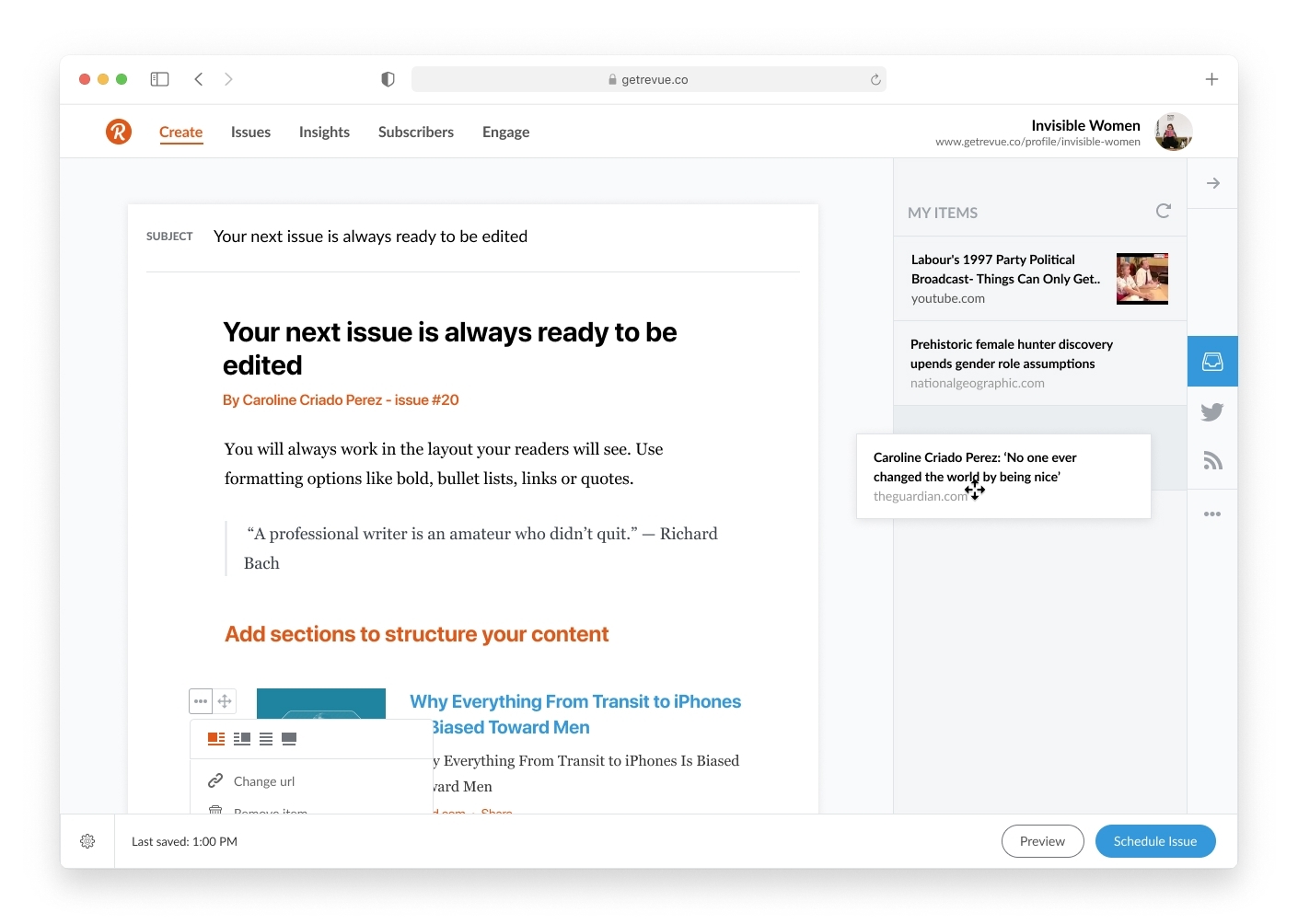
(Robert Hruzek/Flickr)
As a newsletter guy, I need to talk about Revue in this newsletter, even though I very strongly want to talk about this topic instead. But I understand the moment and I realize which story matters more to my readership at this very moment. After all, it was the platform MidRange first started on just under two years ago.
It was a great service. I had good relationships with all the people who worked there. And then Twitter bought them and … it’s been just under two years and the service is basically dead, a victim of significant corporate shifts that we have never talked about in this newsletter, not even once.
Revue was a great platform to work from, but after the announced purchase of Twitter, it clearly was not long for this world.
Meanwhile over the weekend, Twitter purchaser Elon Musk threw a little gasoline around the out-of-the-blue idea that he might be interested in purchasing Substack, which was pitched to him as being a way to take over control of the narrative layer of the internet.
Which, honestly, kind of bruised my heart a little bit, for a few reasons. First off, Revue is an excellent tool, and while it was clearly not a marquee feature of the Twitter acquisition, it had the potential to add value to it, if managed properly. And the fact that he said this about Substack while owning what was effectively a major rival seems to suggest to me that the only reason these services would be valuable to him is because of who uses them.

(Revue/Twitter)
This suggests, to me, that the only true value in a service like Substack or Revue is not its technology but its userbase. Which, if you remember correctly, was not the value proposition of these networks when you joined—it was, “you can join these networks and leave at any time.” But as time has moved on, it has become increasingly clear that the names they were able to get to sign up for these services gave the platform all of its power. And Revue simply didn’t have strong enough names powering its growth.
And that means, to hold onto that power, a service like Substack will start to put up roadblocks to convince you to stay. It will add features that aren’t core, but nice value adds (like chat), that will increase the value proposition. It will put social pressure on people to stay. And it will make it harder to be portable between networks. The current owners of Substack have done some of this already—but given the moves Musk has already done with Twitter, you could see him, as a potential owner of Substack, tighten the screws even further.
Lots of people will like what they have and not want to leave, but others will want alternatives. Revue was supposed to be one of those alternatives. But no longer.
I’ve had a couple people suggest that I made a smart decision for starting my transition away from Revue as soon as the potential deal to buy Twitter was announced—something that required me to not only build out a whole section of my Tedium site, but import roughly 200 posts by hand, with only a little bit of a helping hand from automation. It took me roughly two months of nights and weekends to get back to the point where I was before the switch, and I will tell you that I take no pride in being ahead of the curve.
Nor do I take pride in being proven right in any of my prior commentary about newsletters, platforms, and choice. As you might remember, I started MidRange on a platform specifically to get a stronger understanding of the platform ecosystem so I could better critique it. This is me leveraging that knowledge of that ecosystem in kind of its ultimate form.
What I will say is this. Nearly five years ago, I wrote a take on Medium arguing that we were sending editorial newsletters with marketing tools, and that we needed more newsletter tools built like content management systems. Substack was embryonic at this point. Revue was a little older, but still small scale. The market appears to have listened, as there now are dozens of tools designed specifically for editorial newsletters. In particular, Revue’s team, based on my interactions with them, really seemed to take this advice to heart. It perhaps was the most right I’ve ever been about any commentary related to trends in technology, and I’m glad the market took the hint.
But we’re entering a new stage now, and I guess I’ll say this: Now is a great time to go open source and own your own destiny. Because the platforms, which famously lay out welcome mats to convince you to join, are not going to get any more welcoming after this point.
Godspeed team Revue, you created a good product.
Time limit given ⏲: 30 minutes
Time left on clock ⏲: 3 minutes, 17 seconds



